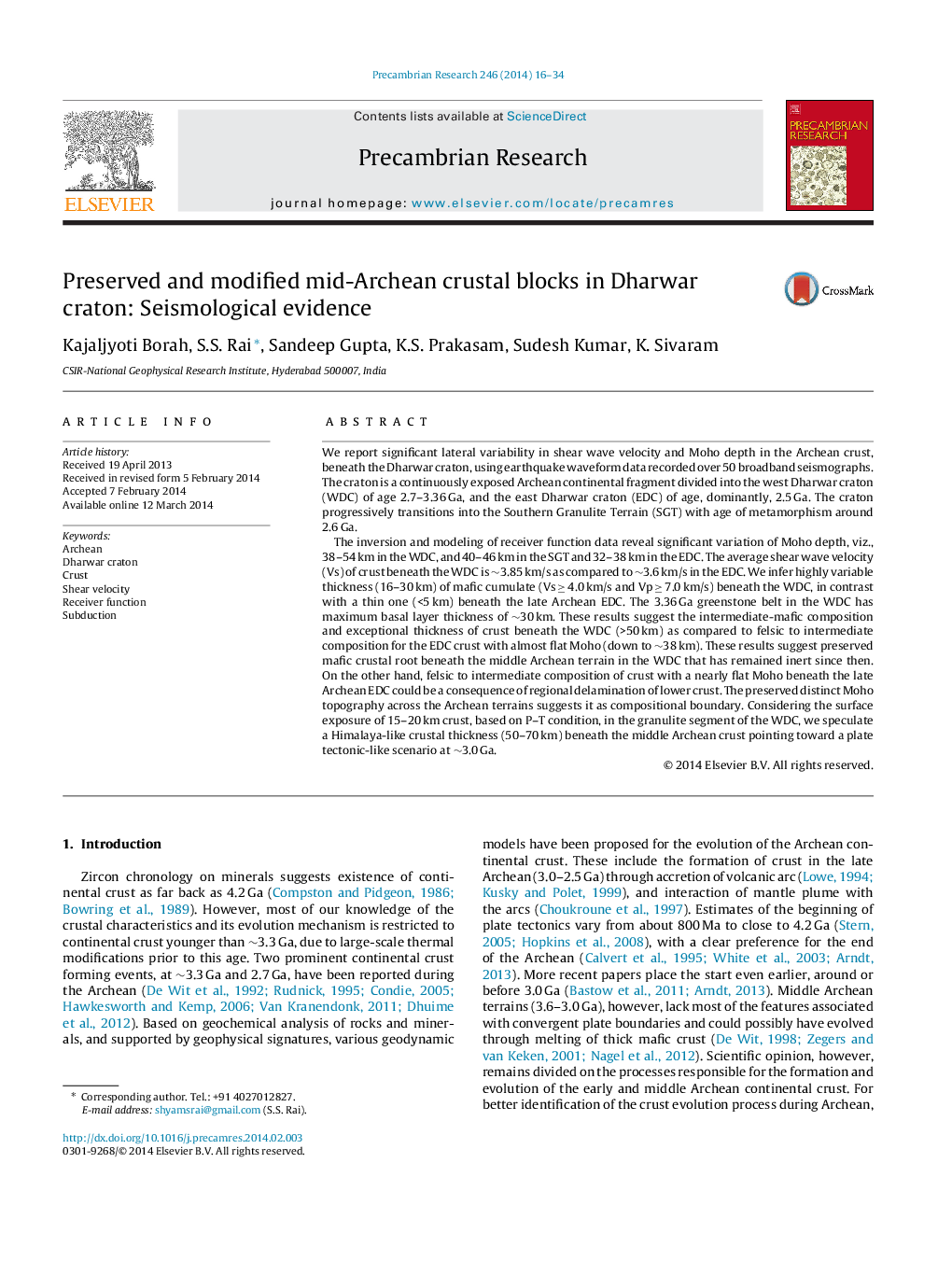| Article ID | Journal | Published Year | Pages | File Type |
|---|---|---|---|---|
| 6442277 | Precambrian Research | 2014 | 19 Pages |
Abstract
The inversion and modeling of receiver function data reveal significant variation of Moho depth, viz., 38-54 km in the WDC, and 40-46 km in the SGT and 32-38 km in the EDC. The average shear wave velocity (Vs) of crust beneath the WDC is â¼3.85 km/s as compared to â¼3.6 km/s in the EDC. We infer highly variable thickness (16-30 km) of mafic cumulate (Vs â¥Â 4.0 km/s and Vp â¥Â 7.0 km/s) beneath the WDC, in contrast with a thin one (<5 km) beneath the late Archean EDC. The 3.36 Ga greenstone belt in the WDC has maximum basal layer thickness of â¼30 km. These results suggest the intermediate-mafic composition and exceptional thickness of crust beneath the WDC (>50 km) as compared to felsic to intermediate composition for the EDC crust with almost flat Moho (down to â¼38 km). These results suggest preserved mafic crustal root beneath the middle Archean terrain in the WDC that has remained inert since then. On the other hand, felsic to intermediate composition of crust with a nearly flat Moho beneath the late Archean EDC could be a consequence of regional delamination of lower crust. The preserved distinct Moho topography across the Archean terrains suggests it as compositional boundary. Considering the surface exposure of 15-20 km crust, based on P-T condition, in the granulite segment of the WDC, we speculate a Himalaya-like crustal thickness (50-70 km) beneath the middle Archean crust pointing toward a plate tectonic-like scenario at â¼3.0 Ga.
Related Topics
Physical Sciences and Engineering
Earth and Planetary Sciences
Geochemistry and Petrology
Authors
Kajaljyoti Borah, S.S. Rai, Sandeep Gupta, K.S. Prakasam, Sudesh Kumar, K. Sivaram,
